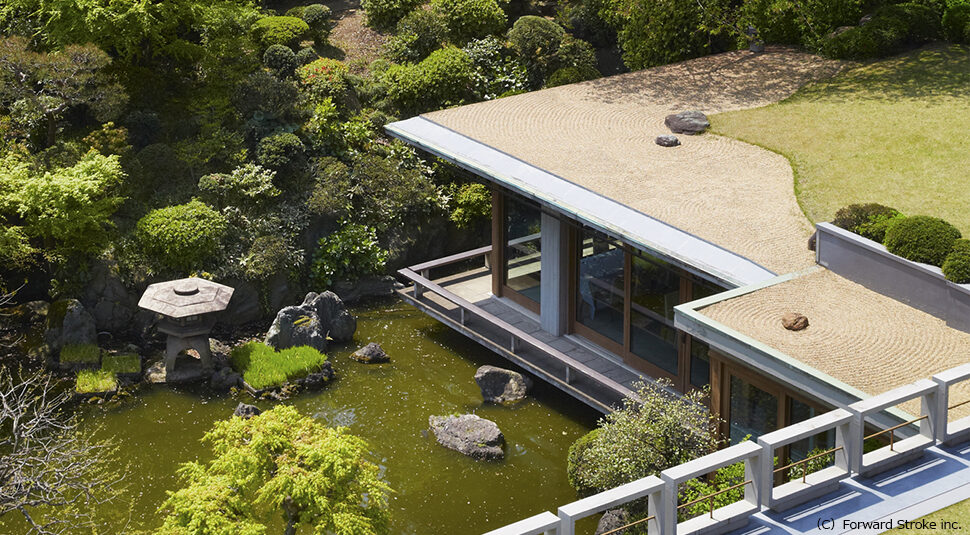Building & Garden
In 1955 the I-House building was constructed under the collaboration of three prominent Japanese architects – Maekawa Kunio, Sakakura Junzō, and Yoshimura Junzō and was awarded the Architectural Institute of Japan Prize the following year. In August 2006, it was registered as a tangible cultural property by the Agency for Cultural Affairs of Japan.
I-House Garden

The projection of the building above the pond was modeled after a motif which can be seen in scroll paintings of the Heian Period (794-1185), while the House garden, designed by the seventh-generation famed Kyoto landscape artist Ogawa Jihei (also known as Ueji), charms people with the ambience of the Momoyama Period (late 16th century) or early Edo Period (early 17th century).
The International House building, although modern in design, was built in harmony with the garden. In October 2005 this garden was designated as a place of scenic beauty by Minato Ward.
*The garden is open to members only.

Ogawa Jihei VII (1860-1933)
Yamagata Aritomo, Saionji Kinmochi, Konoe Fumimaro—one man beloved of all these leaders of the Japanese state since the Meiji Restoration was the Kyoto master gardener Ogawa Jihei VII. In 1894, Ogawa drew water from Lake Biwa to create the garden at Yamagata’s retreat, Murin’an—and from that time onward created a number of naturalistic modern Japanese gardens integrating lively water features into a natural landscape. His fame led Iwasaki Koyata, the fourth-generation head of the Mitsubishi zaibatsu, to commission Ogawa to design the garden for Iwasaki’s residence (now the site of I-House). There are few places in Tokyo where Ogawa’s work can be seen, which makes the I-House garden that survived the firebombings of World War II especially precious.
Stunning aerial drone footage of I-House
『A Place of Harmony』
Documentary Short Film Commemorating I-House’s 70th Anniversary
